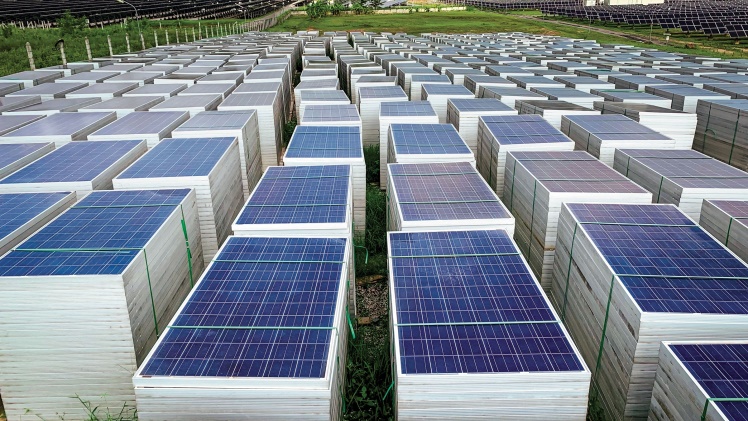Introduction
Solar panels have emerged as one of the most reliable sources of renewable energy in the past few decades. However, with increasing installations of solar PV systems globally, the issue of solar panel waste management and recycling is becoming more prominent. As per estimates, about 50 million solar panels will reach their end of life by 2030. If not recycled properly, this e-waste could severely impact the environment. This is where solar panel recycling comes into play. It allows recovering valuable materials from retired solar panels in an environmentally-friendly manner.
Need for Solar Panel Recycling
Solar panels have a lifespan of 25-30 years on average click here. After this period, their energy generation and performance starts degrading. Homeowners and commercial buildings need to replace old panels to maintain optimal system output. This results in a huge volume of solar panel waste. CoherentMI in Solar Panel Recycling Market discusses that Conventional waste management techniques like dumping or incineration are not suitable for solar panels due to following reasons:
– Solar panels contain toxic materials like lead, cadmium telluride, and crystalline silicon that can contaminate soil and groundwater if not disposed of properly.
– Valuable minerals like silver, copper, silicon, and aluminum used in solar panels get lost when dumped in landfills. Their extraction through mining puts huge strain on the environment and resources.
– Burning of solar panels releases harmful gases and particles in the atmosphere.
This makes recycling the most viable option to safely extract recyclable materials from end-of-life panels and put them back in the material supply chain. It helps minimize dependency on virgin material extraction and enables a closed loop ecosystem for solar panel materials.
Key Processes in Solar Panel Recycling
The major steps involved in solar panel recycling are:
- Collection and Transportation: Old solar panels are collected from sites and transported to recycling facilities. This requires establishing an efficient reverse supply chain network.
- Dismantling: At facilities, panels are dismantled into their core components like glass, plastic backing, interconnectors, aluminum frames through manual or automated sorting.
- Material Separation: Different component materials like silicon, copper, aluminum, etc. are then separated using processes like crushing, shredding, chemical/thermal treatments.
- Material Recovery: The sorted materials are then further refined to extract high purity recyclables like silver, silicon, copper that can be directly used in manufacturing. Resources like glass are recovered for other industrial applications.
The recovered materials greatly reduce the environmental footprint of new panel production. Some recycling facilities are also able to recover up to 90-95% of materials from end-of-life panels. This makes solar panel recycling a highly sustainable solution for the growing volume of solar e-waste.
Business Models in Solar Panel Recycling
With stringent e-waste regulations and reuse targets, solar panel recycling is emerging as a profitable business globally. Different business models have come up in this evolving industry:
– Third Party Recyclers: Independent companies specializing in collection, dismantling and material recovery from various e-waste including solar panels.
– Original Equipment Manufacturers: Major panel producers like Canadian Solar and JinkoSolar have established in-house recycling facilities to recover resources from their own panels.
– EPR Regulated Entities: In regions with Extended Producer Responsibility (EPR) laws, solar panel manufacturers/importers are responsible for financing collection and recycling of end-of-life products.
– Joint Ventures: Collaborations between recycling technology innovators, panel OEMs and e-waste recyclers to establish cost-effective, large-scale recycling infrastructure.
With the support of such recycling ecosystem players, solar panel recycling is gaining commercial viability and emerging as a key part of the overall photovoltaic value chain worldwide.
Market Outlook
For more details on the global market outlook for solar panel recycling, refer to the market research report by CoherentMI. While the report does not provide specific projections, it highlights growing factors like stringent regulations on e-waste disposal, reuse targets set by governments and industry bodies, and cost competitiveness of recycled materials as major drivers of market growth. Asia Pacific currently dominates global solar panel recycling with countries like China, Japan and South Korea taking lead. However, Europe and North America are also emerging as high potential markets. If recycling programs and reverse supply chain networks are strengthened, solar panel recycling is poised to become a multibillion dollar industry worldwide in the coming decade.
To summarize, with exponential growth in solar energy installations and imminent volumes of solar e-waste, recycling offers the most viable solution for sustainable management of end-of-life panels. It allows recovering over 90% resources in an environmentally safe manner while reducing dependency on virgin material extraction. Stringent regulations, reuse targets and emerging business models are propelling solar panel recycling to develop into a commercially self-sustaining segment of the overall solar industry value chain globally. If policy support continues, it will play a key role in establishing closed material loops for solar PV technology.

